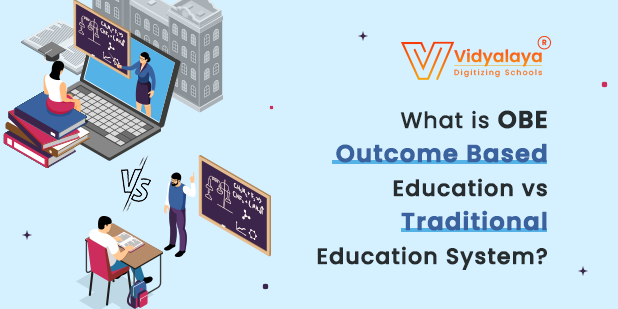Do you know why all students passing with good academic score do not get desired job, whereas sometimes an average student grabs some fascinating job quickly? In most of cases, employers answer this scenario as these fresh bees are not ready for the job market. Despite the impressive academic scores on the card, these students don’t possess employee skills like a deficiency in communication skills, a dearth of critical thinking, and poor interpersonal skills. And, here the Outcome based education system comes into the picture. This educational approach focuses on specifying learning outcomes that students are expected to learn by the end of the educational programme. Learn how this exceptional approach can bring a new chapter in the education sector!
Essence of Outcome based education system:
Amidst the monotonous grade-concentrated learning, there was a need for a pedagogical approach that would redefine the skills and knowledge by the course or program completion. This answers of how rather than what. This strategic approach guides learners of skills required in the real world. Through this, institutes can nurture soft-skills like problem-solving, critical thinking, communication, teamwork, and adaptability, which matter to employers most.
Key Components of Outcome based education system:-
There are significant differences between traditional learning and outcome based learning systems. Teachers can implement this approach with the following key components:
1. Institution Vision and Mission Statements:
Vision statement describes the institute’s objectives of enabling the students to meet their academic goals and offering a comprehensive student support system. A mission statement depicts the institute’s objectives for empowering students in a particular discipline. It also deals with the overall development of students and some teaching skills. Following aspects can help in defining both statements:
- Discussion with experts and faculties across departments
- Having a talk with industry experts and alumni
- Analysing the discussion and coming with a full-proof plan
2. Defining Educational and Program Outcomes:
Students are expected to earn some program educational objectives (PEO) after the completion of graduation. These objectives are designed by collaborating with all stakeholders and in sync with vision and mission statement. Here are the steps to establish program educational outcomes for the institutions:
- After understanding the mission and vision statement, the institute should come up with a plan to achieve PEOs.
- Faculty members and head of departments will prepare drafts, which will be shared across departments. Points covered in the draft are taken for discussion after the confirmation from authorities.
- After taking the suggestions from everyone, a final draft is prepared and presented to the program assessment committee and they forward it to the departmental advisory board.
- Members of the departmental advisory board assess the points and forward the draft to the board of studies and academic council for final approval. After this approval, institutes need to design a curriculum for the comprehensive development of the students.
- Periodic evaluation of the student learning outcomes is done to identify the learning gaps and fix them.
3. Establishment of Program Outcomes
Program outcomes like problem analysis, ethics, communication, investigation, engineering skills, project management, and others are central to the OBE system that helps students in their respective discipline. To design the program outcomes, here is a step-by-step approach:
- Program coordinator consultant team members prepare a draft containing the program outcomes by consulting them with experienced faculty members.
- The coordinator also has a discussion with alumni, industry experts, and employers so that they can understand the specific requirements of the current industry and trends. After this discussion, the original draft goes under modification and is sent to the program assessment committee.
- The committee will review the draft and forward the draft to the board of studies and academic council for final approval.
- The board moderates the draft and takes the final call.
4. Establishing the Course Outcomes
Course outcomes are the short-term objectives that need to be achieved by the end of the semester or year. All institutes design course outcomes depending on the program outcomes and enable students to understand the core reasons for pursuing the particular course. It also includes specifying what students will get to do after the course completion. The course outcomes and program outcomes need to be mapped and are achieved through the following process:
- Narrate and achieve the course outcomes
- Map the course outcomes with program outcomes
- Decide an apt weightage for course outcome assessment
- Measure the course outcomes through the assessments given to the students
- Calculation of Cos and Pos attainment
Importance of the OBE System in Modern Educational Set-up
In recent years, the education department is constantly stretched itself to accommodate the latest trends and employee skills in the curriculum. That’s why they incorporate innovative strategies like the OBE system in modern education. Through this, they will enable faculty members and the institute to offer effective educational opportunities because of the following reasons:
1. Clearly defined learning outcomes:
Outcome based education system refrains students from doing something without proper knowledge of why they are doing the thing. It defines clear and scalable outcomes for every course which describe what students are going to learn during and after the program. This transparency helps to gain a sense of clarity from the start of the program, makes the further moves easy to proceed step by step.
2. Alignment with objectives:
Today, the teacher-centred approach has become an old-school concept and now teachers and institutes collaborate to design adaptable educational programs. These programs are designed such that learning outcomes will have relevance with the broader educational objectives. Thus, they endeavour varied methods after identifying learners’ learning levels. Further, the OBE system integrates a student-centric approach to reduce the complexity levels of the curriculum.
3. Assessment-driven:
Rather than sticking to periodic evaluation of students, the Outcome based education system believes in continuous assessment to verify whether students are learning the decided outcomes. Teachers can implement diverse assessment methods like tests, seminars, presentations, projects, etc. to evaluate student performance.
4. Student-oriented approach
Compared to traditional learning, the OBE system focuses on learning rather than teaching. It concentrates on needs of an individual student. It also ensures that every student meets the desired outcomes. Not only academic but it incorporates skill enhancements so that they will have practical knowledge of everything that they have learned inside the classroom.
Checkout – Full Guide about Learning Outcomes-based Curriculum Framework
Wrapping up!
It is constantly highlighted by the industrial sector that fresh talent coming from educational institutes cannot cope up with high skills. To rectify this, there needs to bring some innovative modifications in the conventional education system. An approach that will be based on providing education that will empower learners with outcome-based courses. It transforms the learning experience of students and encourages them to acquire knowledge in better ways.
Vidyalaya School Software promotes this unique approach and integrates in its products. To know more about the OBE module, give us a call or drop an email!





















